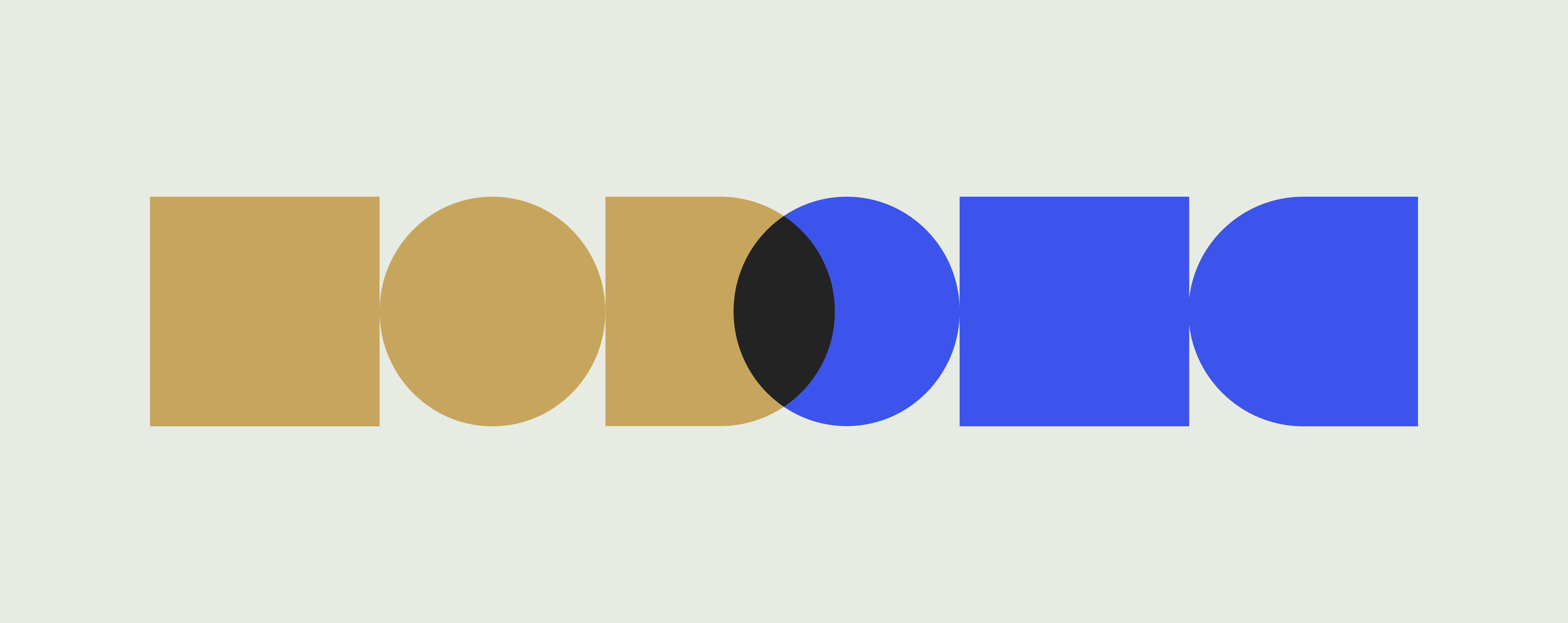Playtype Head Mathias Jespersen on the rise of bespoke brand typefaces
Enterprise Innovation Podcast: The Rise of Bespoke Typefaces for Brands with Playtype Head Mathias Jespersen
Key takeouts from this episode
- How easily customers can recognize a brand by reading a few words in a bespoke typeface, and why small details matter
- The technical and change management difficulties of getting all employees in a company to use custom fonts in their daily work
- The key reasons behind the ever increasing demand for bespoke typefaces
- A success story from Playtype on creating a new typeface for Københavns Kommune (Copenhagen Municipality) for their communications across the city
- Whether it is possible to measure the ROI of bespoke fonts in a company
One of the core assets of a brand is its typeface. Most design and marketing people would agree. The challenge, however, is getting the everyday user to grasp the importance of this. In this podcast interview, special guest Mathias Jespersen talks us through the value in choosing an immediately recognizable font, and the need for seamless solutions to get all employees to embrace and use it.
Many companies spend significant amounts of time and money choosing the perfect typeface for marketing. Indeed, it is worth the investment – a company’s visual story is intimately tied up with their font. But when they make these changes, how do they roll them out to the entire company?
In this episode of Enterprise Innovation’s podcast, Playtype head Mathias Jespersen and Templafy co-founder Christian Lund get to grips with the main problems of distributing new fonts throughout an organization, and why the desire for bespoke fonts is increasing. Read on to get a sneak peek into what was discussed.
Choosing and distributing fonts
Font choice and management is a vital part of branding
The Power of a Custom Typeface behind Brand
Nearly all people today know what a font is. What they may not know, however, is how important fonts or typefaces are in branding.
Yet most people recognize popular (or unpopular) fonts – think Comic Sans or Times New Roman. Not only that, most people recognize bespoke fonts from brands. To demonstrate this to clients, Mathias shows them a few words written in a well-known company’s font. To their surprise, many immediately know who it is, even if the words are random.
This, says Mathias, is a powerful tool to show how important typefaces are when it comes to brand. It also shows how subtle differences in the design and combination of letters can make a large impact. Each font has a distinct visual feel, and recognizing the difference can feel almost subconscious, he explains.
An Increasing Interest in Bespoke Fonts
The number of clients asking for a bespoke typeface is rising fast. Both Mathias and Kristian see more and more requests for special fonts and typefaces that aren’t part of the standard package on Windows. So why this shift?
First, because people are starting to realize that the font is a huge part of the visual identity and brand. And second, because of the multitude of channels where a brand is now showcased, including websites and social media.
In fact, Mathias tells us, it very often starts with website design in branding and marketing, where clients see what a new font can do for them. And because browsers now support all kinds of custom fonts, clients quickly want to utilize the opportunity to have a streamlined and coherent brand expression.
Read next: Find out more about how font distribution and management contributes to your brand image
The Main Challenges of Font distribution
Once a font is chosen, font distribution is the next big step: dispersing the typeface file throughout an organization so it is used in all documents and communications. But convincing a small group that a font matters is one thing – getting the rest of the company to download and use it is another.
Mathias explains that sending a quick email with a link won’t cut it in large organizations with thousands of users. And even in smaller organizations, changing the font is rarely at the top of the list when making a new document.
So how to tackle this issue? Both Mathias and Christian agree that new and innovative solutions are needed, because people can be strangely strong-willed people about the fonts they prefer. And if they don’t understand the thought behind a font choice, they often choose something that they are familiar with.
According to Mathias, the first step is to make sure employees understand why they are using a custom typeface, and then use a seamless, smart distribution tool. This could be technology that distributes fonts automatically, with a per user licensing structure and easy installation. Overall, they explain, everyday employees should not be expected to care about fonts. It should be automatic.
Building Trust with Consistency: A Success Story of Typeface Implementation
Positive feedback is great, but is it possible to measure the ROI on bespoke fonts?
Mathias explains that showing hardcore facts – such as a 20% increase in sales – is not really possible. But many small things around a typeface can be measured. This could be how well a company buys-in to the importance of the font, from IT and marketing to top management. It could also be how useable the font is for stakeholders. To take the Københavns Kommune above, it was really important that all citizens could clearly read the font. This can be measured and turned into a direct metric.
To learn more about font distribution and boosting your brand with bespoke typefaces, dive deeper into Mathias Jespersen’s expertise by listening to the Enterprise Innovation podcast, episode now available on SoundCloud, Spotify, iTunes and Stitcher or download the font distribution guide.
Explore other Enterprise Innovation Podcast episodes
Key takeouts from this episode
One of the core assets of a brand is its typeface. Most design and marketing people would agree. The challenge, however, is getting the everyday user to grasp the importance of this. In this podcast interview, special guest Mathias Jespersen talks us through the value in choosing an immediately recognizable font, and the need for seamless solutions to get all employees to embrace and use it.
Many companies spend significant amounts of time and money choosing the perfect typeface for marketing. Indeed, it is worth the investment – a company’s visual story is intimately tied up with their font. But when they make these changes, how do they roll them out to the entire company?
In this episode of Enterprise Innovation’s podcast, Playtype head Mathias Jespersen and Templafy co-founder Christian Lund get to grips with the main problems of distributing new fonts throughout an organization, and why the desire for bespoke fonts is increasing. Read on to get a sneak peek into what was discussed.
The Power of a Custom Typeface behind Brand
Nearly all people today know what a font is. What they may not know, however, is how important fonts or typefaces are in branding.
Yet most people recognize popular (or unpopular) fonts – think Comic Sans or Times New Roman. Not only that, most people recognize bespoke fonts from brands. To demonstrate this to clients, Mathias shows them a few words written in a well-known company’s font. To their surprise, many immediately know who it is, even if the words are random.
This, says Mathias, is a powerful tool to show how important typefaces are when it comes to brand. It also shows how subtle differences in the design and combination of letters can make a large impact. Each font has a distinct visual feel, and recognizing the difference can feel almost subconscious, he explains.
An Increasing Interest in Bespoke Fonts
The number of clients asking for a bespoke typeface is rising fast. Both Mathias and Kristian see more and more requests for special fonts and typefaces that aren’t part of the standard package on Windows. So why this shift?
First, because people are starting to realize that the font is a huge part of the visual identity and brand. And second, because of the multitude of channels where a brand is now showcased, including websites and social media.
In fact, Mathias tells us, it very often starts with website design in branding and marketing, where clients see what a new font can do for them. And because browsers now support all kinds of custom fonts, clients quickly want to utilize the opportunity to have a streamlined and coherent brand expression.
Read next: Find out more about how font distribution and management contributes to your brand image
The Main Challenges of Font distribution
Once a font is chosen, font distribution is the next big step: dispersing the typeface file throughout an organization so it is used in all documents and communications. But convincing a small group that a font matters is one thing – getting the rest of the company to download and use it is another.
Mathias explains that sending a quick email with a link won’t cut it in large organizations with thousands of users. And even in smaller organizations, changing the font is rarely at the top of the list when making a new document.
So how to tackle this issue? Both Mathias and Christian agree that new and innovative solutions are needed, because people can be strangely strong-willed people about the fonts they prefer. And if they don’t understand the thought behind a font choice, they often choose something that they are familiar with.
According to Mathias, the first step is to make sure employees understand why they are using a custom typeface, and then use a seamless, smart distribution tool. This could be technology that distributes fonts automatically, with a per user licensing structure and easy installation. Overall, they explain, everyday employees should not be expected to care about fonts. It should be automatic.
Building Trust with Consistency: A Success Story of Typeface Implementation
To take an example of a successful new typeface in action, Mathias talks through their work with Københavns Kommune – (Copenhagen Municipality). Playtype created the core typeface for the organization and implemented it over two years.
In the end, they created a whole new brand system based around the font. This will be used in every corner of the municipality, from street signs to emails sent to families in day-care centers. Mathias explains how important this was for a public institution like Københavns Kommune, because consistency builds trust. And they’ve so far had very positive feedback, both internally and externally.
“The most important part is that there has been no yelling and screaming – it feels natural, part of the city. It feels Copenhagen.” Mathias says.
Measuring the Return on Investment for Branded Typefaces
Positive feedback is great, but is it possible to measure the ROI on bespoke fonts?
Mathias explains that showing hardcore facts – such as a 20% increase in sales – is not really possible. But many small things around a typeface can be measured. This could be how well a company buys-in to the importance of the font, from IT and marketing to top management. It could also be how useable the font is for stakeholders. To take the Københavns Kommune above, it was really important that all citizens could clearly read the font. This can be measured and turned into a direct metric.
To learn more about font distribution and boosting your brand with bespoke typefaces, dive deeper into Mathias Jespersen’s expertise by listening to the Enterprise Innovation podcast, episode now available on SoundCloud, Spotify, iTunes and Stitcher or download the font distribution guide.
Explore other Enterprise Innovation Podcast episodes


